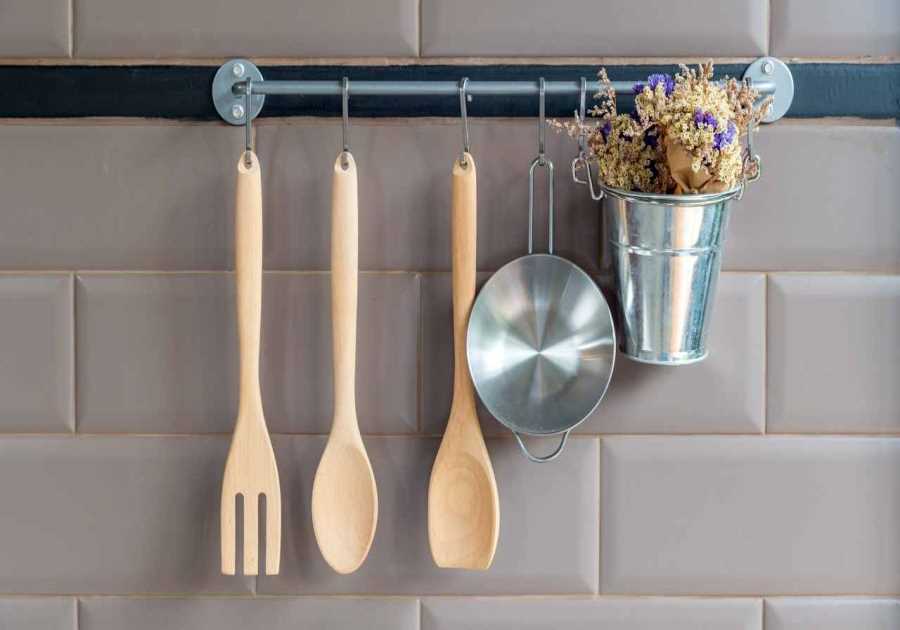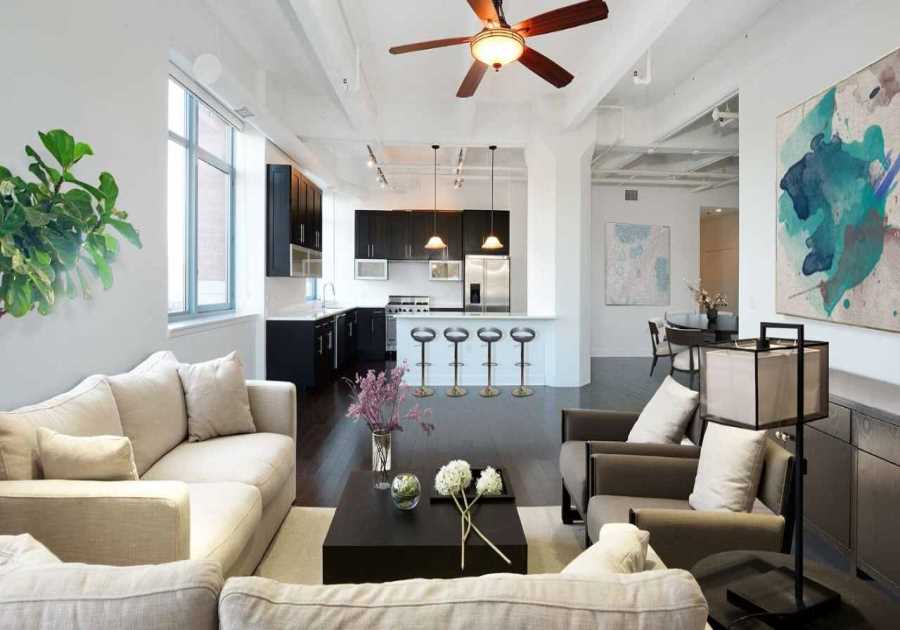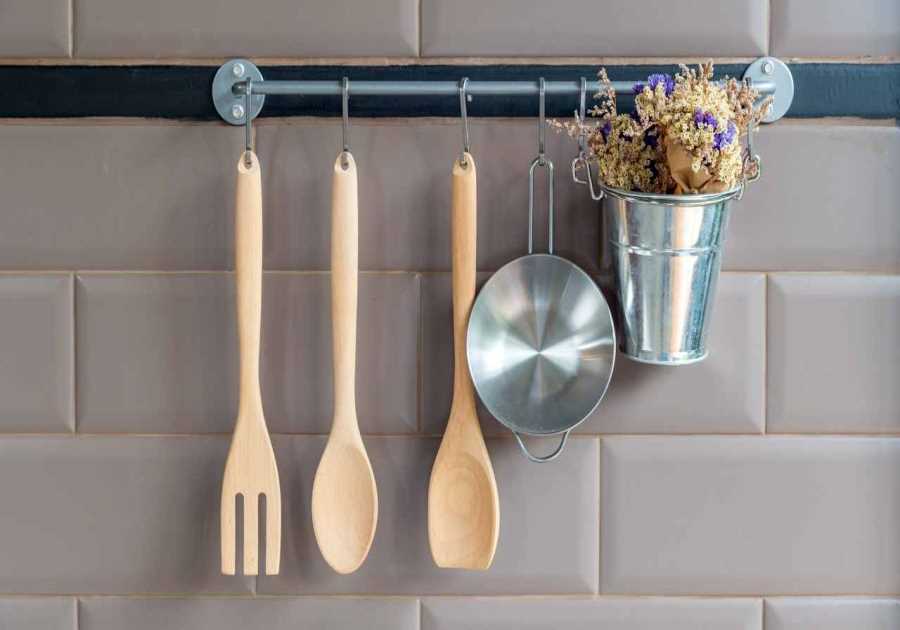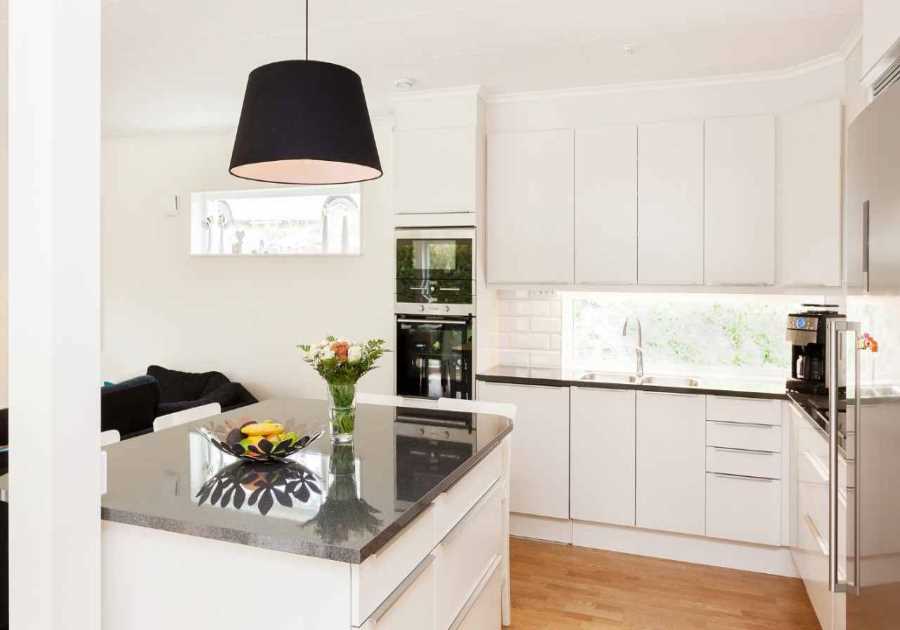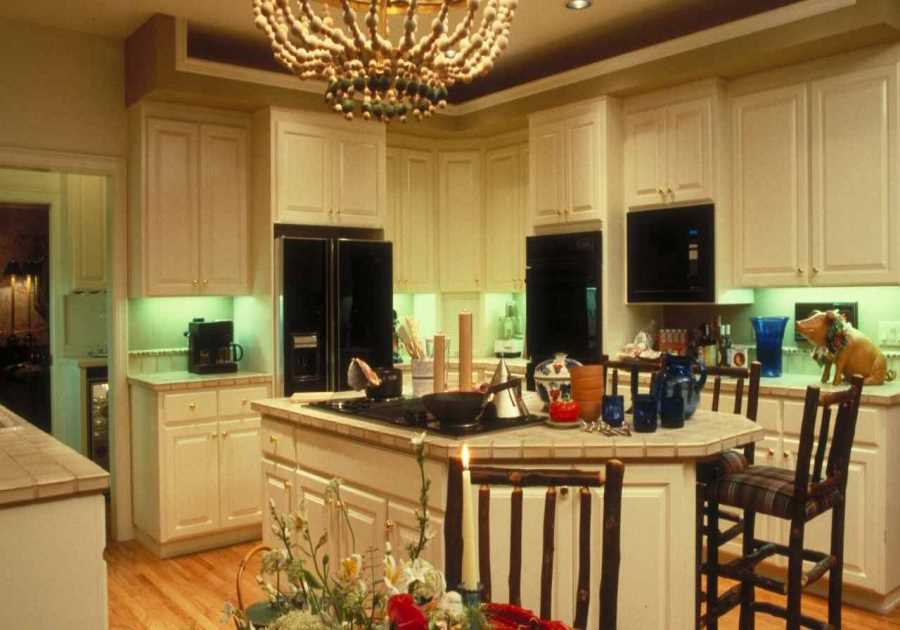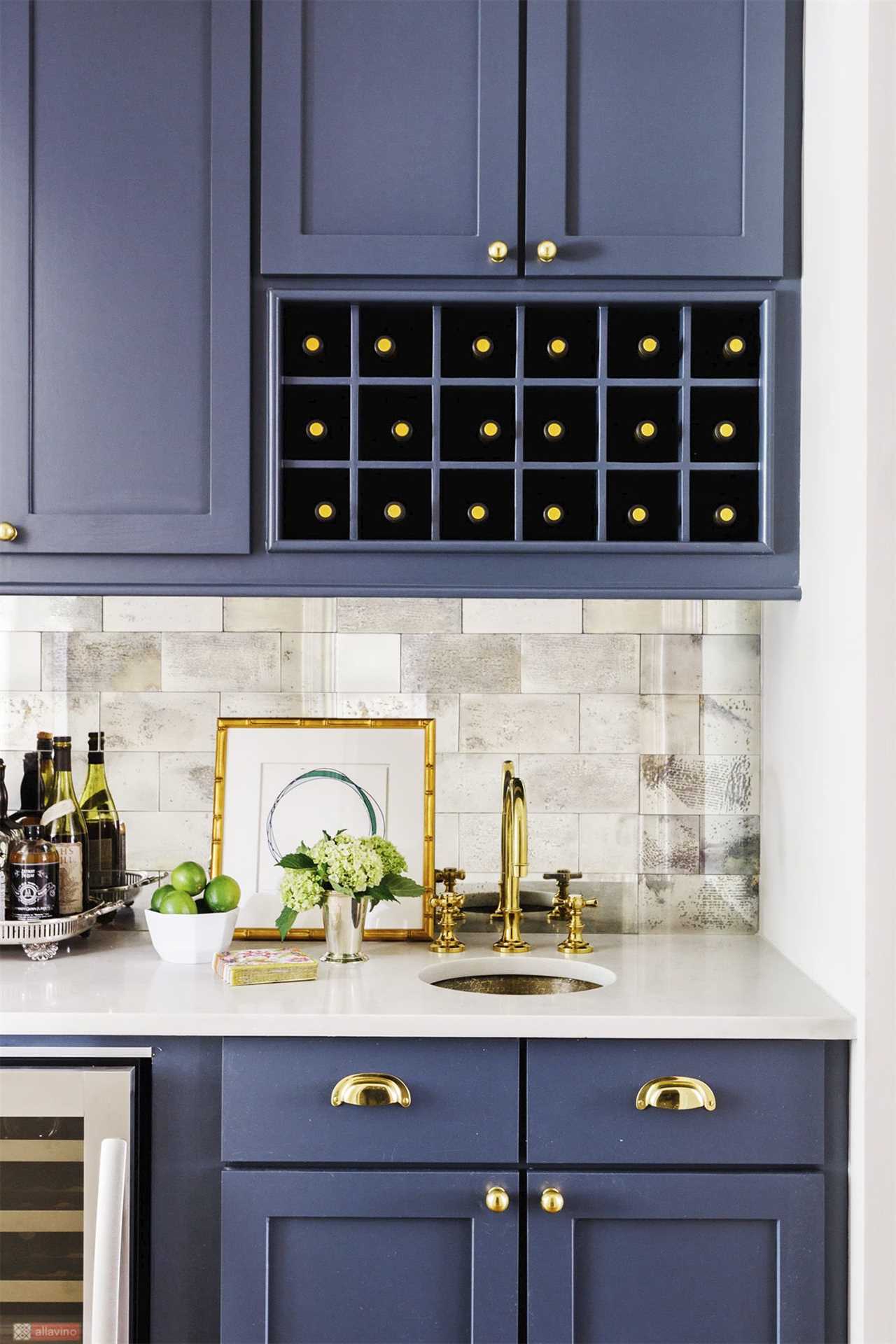
How to use minimal space to create grandeur in small kitchen cabinets.
Every kitchen should feel grand, regardless of the size. And with a few simple tips and tricks, you can make the most of your petite kitchen and create a sense of lavishness, even when working with limited space.
Our mission: is to make maximum use of minimal space to inject grandeur into small kitchen cabinets!
So let's get started!
The first step is to remove all items that aren't necessary from your cupboard. Leave behind only those items which add style - such as nice jars, attractive containers or even candles - and don't be afraid to show off these pieces. This will instantly open up more storage room and help establish an airy atmosphere in any confined space.
Next up, aim for uniformity; think about using baskets or lined trays to corral all the smaller items which tend to clutter kitchen shelves. Matching containers give a unified look while keeping things orderly and welcoming - creating the illusion of plenty despite compactness.
Once everything is organized, it's time to add visual interest. Introducing texture can surprisingly impact how spacious a room feels - plus it has endless decorative possibilities too! Consider adding an area rug with vibrant patterned fabrics in bold colours or woven baskets featuring interesting textures — whatever works best in your scheme and adds eye-catching contrast against your other pieces.
Finally, max out natural light by removing blockages from windowsills or countertops that might cast shadows onto your cupboards — as lots of bright light can elevate a small room. If there are no windows available, then installing overhead lights is also worth looking into — remember not to overcrowd lighting fixtures, as this puts undue strain on outlets and creates an unwelcome glare over food preparation areas.
These are just four easy steps for sprucing up small kitchens - so why not see what you can do today? With careful planning and some creative flourishes, you’ll soon be using optimal ways for making big changes in confined spaces – transforming that tiny corner into something truly marvellous!
White is a safe choice for small spaces.
Choosing small white kitchen cabinets gives your kitchen a clean and fresh look. These cabinets are perfect for minimalist and modern design styles. They are also easy to clean. You can choose from a wide variety of finishes. The best part is that they pair well with almost any colour palette.
White kitchen cabinets come in warm and cool shades. Warm whites are best paired with creams and neutrals. Cool-toned whites look great with chrome cabinet hardware. There are many different brands of white cabinets on the market.
A white cabinet with a black knob is a striking visual. Using a lighter ceiling colour than your cabinet colours will make your kitchen feel larger. This is because a darker colour absorbs light.
Exposed shelving is a must.
Exposed shelving is a great way to showcase your kitchen equipment. It also helps to make your home look more spacious. When selecting open shelving, it's important to select the right materials.
Opt for a modern or contemporary look for glass, metal, or wood shelves. Using the right materials is key to making your shelves look like they've been there for years.
Among the more mundane tasks is cleaning the dust from your open shelving. A simple cleaning regimen will go a long way. Use a soft cloth and soap to wipe the shelves down once a week.
Glass also works well in small spaces!
Glass kitchen cabinets are a great way to make a small kitchen feel bigger. But they also require some maintenance. They're a popular choice among US homeowners. The doors of these cabinets can be tinted, etched, and frosted to enhance their appearance. And the glass itself can be a good way to showcase a few decorative items.
Aside from adding a decorative touch, glass inserts can help keep dust out. This allows you to display more of your kitchen essentials. Plus, it can add a little openness to your space.
Frequently Asked Questions
How does a kitchen remodeling project affect your home?
Up to 20% increase in value can be achieved by renovating your kitchen. A major remodel can cost anywhere from $40,000 to $150,000, so it's essential to consider how much you can afford to spend and whether you'll see a return on your investment.
You should choose a kitchen design which will appeal to a broad range of buyers if your goal is to sell your home soon. Avoid putting off potential buyers by sticking with neutral colors and classic styles.
If you're not planning on selling your home anytime soon, you have more freedom to personalize your kitchen. Consider what you use your kitchen for and how you want it to look and feel. Are you an entertainer? Consider a layout that offers plenty of space for prep and guests. Are you passionate about cooking? Then you may want to splurge on higher-end appliances.
No matter your plans, a kitchen remodel can be a great way to increase your home's value. To get the best results, make sure you research and hire a reliable contractor.
Do you put flooring under kitchen appliances?
Flooring should be placed under all kitchen appliances. This way, your countertop is at its proper counter height.
What are the drawbacks of an open-concept cooking style?
Privacy is the biggest issue. With an open-concept kitchen, you can't hide the mess from guests. If you are passionate about cooking, it might be a problem to have too many people around. An open kitchen can be challenging to keep clean if there isn't a designated cooking and eating area. A kitchen that is open-concept may not work for you if there aren't enough square footage.
Are you looking to remodel your kitchen?
It's best to create a list listing your wishes and needs. This will help you communicate your needs to potential kitchen designers, remodelers, and contractors.
- Budget: How much will you spend on your new kitchen in the next year?
- - Size: What is the size of your kitchen? Is it necessary to increase or decrease its size?
- Layout: How do you arrange your kitchen? Is it necessary to change the layout in your kitchen?
- - Appliances: Which appliances would you like in your new kitchen?
- - Storage: How do you store your food and other supplies in your new kitchen.
- - Style: Which style of kitchen do your want? Traditional, contemporary, rustic, etc.
- - The Colors: What color do you want to use in your new kitchen.
You are now ready to plan your new kitchen.
What is the 5-zone cooking?
Innovative design allows for efficient cooking in a smaller space. It has five distinct cooking areas, including a sink area and stove area. There is also a fridge, freezer, food preparation area and dining area. This allows every cook to have their own workspace and eliminates the need of a large, multi-functional kitchen.
Maximil, a German designer of kitchens, invented the 5-zone kitchen. It is often used in European-style kitchens. Families who wish to save time and money by cooking together can benefit from this 5-zone kitchen.
There are some things you should keep in mind when designing a 5-zone kitchen. First, the kitchen must have enough space for all five zones. Each zone must be ventilated properly to prevent any lingering smells and fumes. Third, each zone should have enough space to allow for movement.
The 5-zone kitchen can be an excellent option for those who want a more efficient and stylish kitchen. With proper planning, it can be a great addition to any home.
What are the advantages of the 5-zone kitchen?
The 5-zone Kitchen has many benefits.
- Increased efficiency - Each cook has their own workspace, eliminating the need to move around between appliances.
- More elegant - the 5-zone cooking system is common in European-style kitchens. It can bring a sense of style to your home.
- Better ventilation: Each zone has adequate ventilation, which keeps odors and fumes out of the kitchen.
- Improved layout – The kitchen layout should make it easy to move between the zones.
The 5-zone kitchen can offer a stylish, efficient option for those looking to create a beautiful kitchen. It can be an excellent addition to any home if you plan well.
What are my options for planning a new kitchen?
There are many options available, no matter whether you're remodeling an existing space or designing your dream kitchen.
Before you begin, spend some time gathering inspiration online. Look online for inspiration photos. Take down ideas for design. With a pen, paper and a pencil, draw out where each element will be located.
Now think about ways you can improve on these spaces. What can you do to improve these spaces? What would you do differently? If you want to get creative, why not ask someone who knows what she's talking about?
Once you've determined what you want to do, it's time you start. Start with the basics. Eliminate any clutter. Get rid of appliances that you don't use often. Replace old fixtures with newer models.
Next, you need to find areas in your kitchen where storage is limited. This can be as simple as looking for areas that are too small to store or have no countertops. These are the places you should maximize. They could become wine cellars or pantries.
Lighting is also important. Is there an area that could be lit brighter? Maybe a wall sconce could brighten up a dark corner.
Once you've completed your list of improvements, the fun part comes: implementing them!
You don't have to know everything right away. You can just keep going until you have it all figured. Enjoy using your project every day.
What are the key characteristics of an ideal kitchen design?
A large kitchen should provide ample storage space for all your cooking and cleaning needs. A well-designed kitchen also has easy access to natural light and ventilation.
Statistics
- Followed by cabinet cost, labour, and appliance costs consume 20 percent each of your budget. (hgtv.com)
- It's a fantastic thing about most home improvement projects: no matter the job. It often seems like the last 20% is the most difficult. (familyhandyman.com)
- In large firms, the commission charged by the GC ranges from 15 to 25 percent of the total job cost. (thespruce.com)
- Your most significant cost investment for a kitchen remodel will usually be cabinets, typically comprising 25 percent of your budget. (hgtv.com)
- Keep 10 to 25 percent of List 2, depending on the budget. (familyhandyman.com)
External Links
homeadvisor.com
- Learn how much it takes to remodel a Kitchen. Compose, SEO.
- How much does a kitchen remodel increase your home's value? - HomeAdvisor
houzz.com
- The Habitatilist – Project Photos & Reviews – South Orange NJ US
- Kitchen Workbook: 8 Essential Elements to a Craftsman Cookbook
homeguide.com
thespruce.com
- Open Floor Plan: History of the Pros and Con's
- Get Kitchen Remodeling Estimates by Professionals
How To
Here are the 8 Basic Steps of Kitchen Remodeling for Beginners:
These are the steps to follow when starting a DFY program for beginners:
- Remodeling your kitchen requires three simple steps. First, you need to decide whether you want an entire kitchen renovation or just replacing fixtures and appliances. Second, determine which type of kitchen design fits your lifestyle best. Third, decide whether you want to do the job yourself or hire professionals.
- Next, decide what type of kitchen you want. Do you prefer a traditional style kitchen with cabinets, countertops and appliances? You might prefer modern designs with minimal storage and clean lines. You might be interested in adding a large island to your kitchen or a breakfast bar. You will also need to hire an experienced contractor to assist you with the installation after you have selected a layout, finish and material.
- Although the kitchen is the heart and soul of every home it is often overwhelming for homeowners because of the many decisions that they have to make before they begin their project. There are a few easy ways to get started.
- Deciding whether to renovate or remodel - This is the first step in deciding if you want a complete kitchen renovation or to replace any of the fixtures or appliances. If you're planning to gut the space and start from scratch, you'll need to factor in the cost of demolition, new cabinets, countertops, appliances, flooring, and lighting.
- How to Determine Your Budget - Before you start thinking about how much money you can spend on your kitchen renovation, you need to calculate what you can afford. This includes everything including labor costs, supplies, and the budget.
- Choose your Layout – Once you've decided how much you can afford, the next step will be to choose where you want to install your new kitchen. There are many layouts to choose from, including open, peninsula, galley or corner. Each layout has its own pros and cons so it is important to choose the one that suits your needs.
- Select your Materials - After you have chosen the layout for your kitchen, it is time to pick materials. This includes everything from countertops and cabinets to flooring, lighting, and lighting. There are many choices available so it is important to research and choose the right materials for you.
- Hiring Professionals - Once you have selected your materials, it is time to look for a professional who specializes in kitchen construction. A reliable contractor will make sure that everything runs smoothly, right from design to installation. They will provide support services to ensure that there are no problems.
- Enjoy! Congratulations! You have reached the end of your kitchen remodel process. Enjoy it! If you love your new kitchen, you won't mind spending hours cooking delicious meals. However, if you still have doubts about your kitchen's design, it is worth taking the time to get acquainted with it. It will give you a better idea of whether or not your remodel was worth the effort.
.png)
